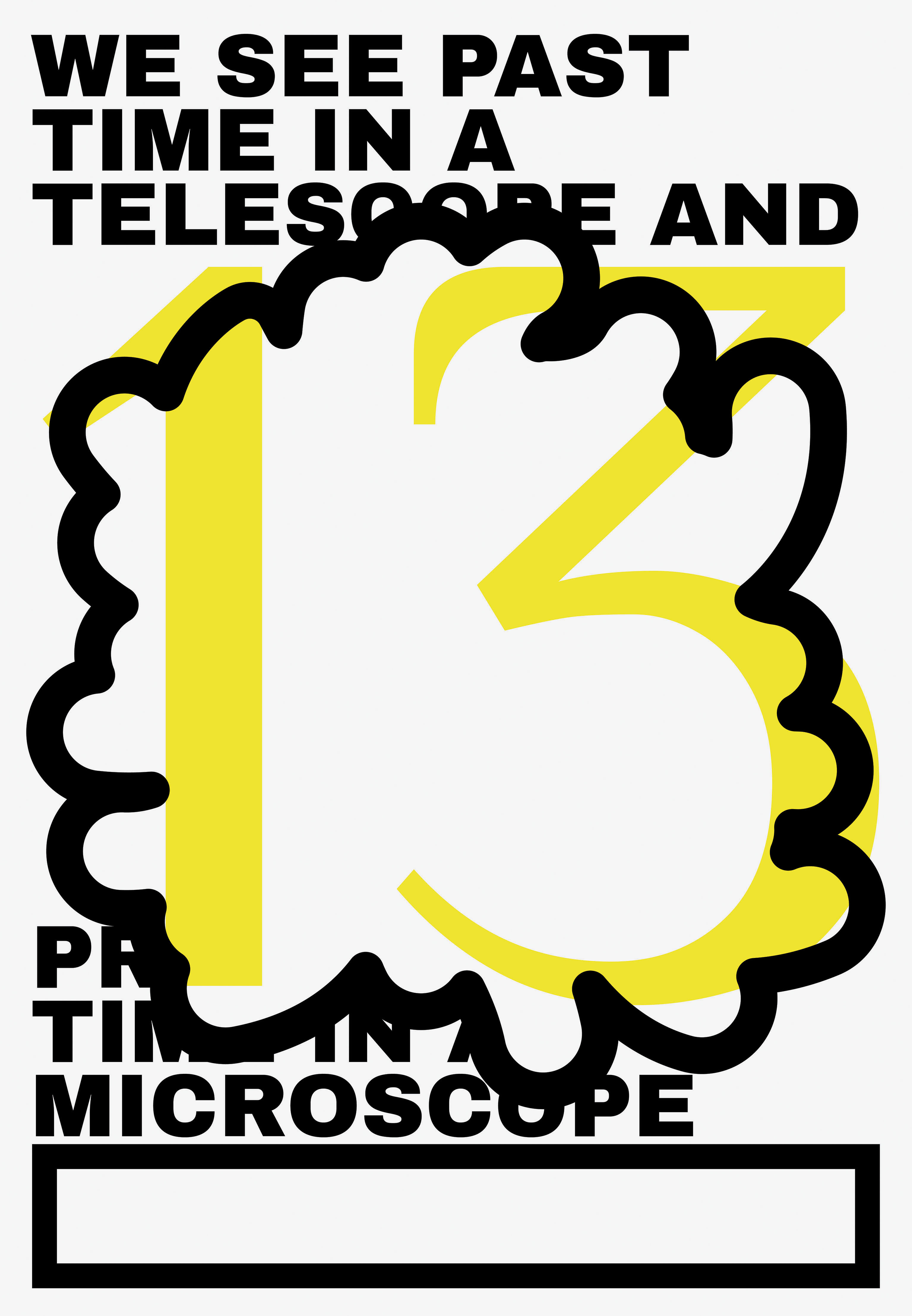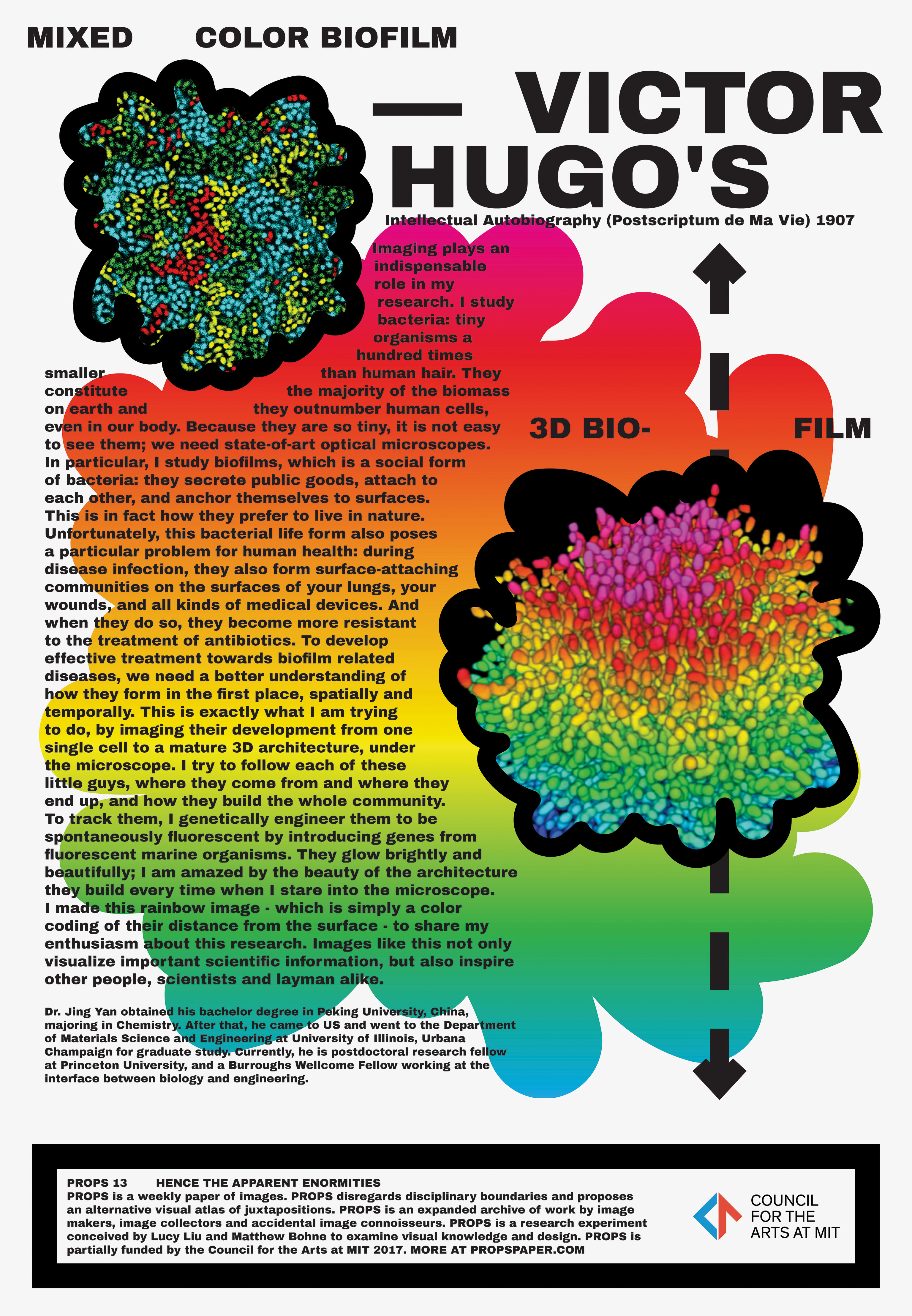

13 HENCE THE APPARENT ENORMITIES
JING YAN︎︎︎
Imaging plays an indispensable role in my research. I study bacteria: tiny organisms a hundred times smaller than human hair. They constitute the majority of the biomass on earth and they outnumber human cells, even in our body. Because they are so tiny, it is not easy to see them; we need state-of-art optical microscopes. In particular, I study biofilms, which is a social form of bacteria: they secrete public goods, attach to each other, and anchor themselves to surfaces. This is in fact how they prefer to live in nature. Unfortunately, this bacterial life form also poses a particular problem for human health: during disease infection, they also form surface-attaching communities on the surfaces of your lungs, your wounds, and all kinds of medical devices. And when they do so, they become more resistant to the treatment of antibiotics. To develop effective treatment towards biofilm related diseases, we need a better understanding of how they form in the first place, spatially and temporally. This is exactly what I am trying to do, by imaging their development from one single cell to a mature 3D architecture, under the microscope. I try to follow each of these little guys, where they come from and where they end up, and how they build the whole community. To track them, I genetically engineer them to be spontaneously fluorescent by introducing genes from fluorescent marine organisms. They glow brightly and beautifully; I am amazed by the beauty of the architecture they build every time when I stare into the microscope. I made this rainbow image - which is simply a color coding of their distance from the surface - to share my enthusiasm about this research. Images like this not only visualize important scientific information, but also inspire other people, scientists and layman alike.
Dr. Jing Yan︎︎︎ obtained his bachelor degree in Peking University, China, majoring in Chemistry and graduate degree in the Department of Materials Science and Engineering at University of Illinois, Urbana Champaign. Currently, he is a postdoctoral research fellow at Princeton University, and a Burroughs Wellcome Fellow working at the interface between biology and engineering.
Further reading on bacteria and biofilms: "Scientists get their first look into how bacteria construct a slimy biofilm fortress".
Imaging plays an indispensable role in my research. I study bacteria: tiny organisms a hundred times smaller than human hair. They constitute the majority of the biomass on earth and they outnumber human cells, even in our body. Because they are so tiny, it is not easy to see them; we need state-of-art optical microscopes. In particular, I study biofilms, which is a social form of bacteria: they secrete public goods, attach to each other, and anchor themselves to surfaces. This is in fact how they prefer to live in nature. Unfortunately, this bacterial life form also poses a particular problem for human health: during disease infection, they also form surface-attaching communities on the surfaces of your lungs, your wounds, and all kinds of medical devices. And when they do so, they become more resistant to the treatment of antibiotics. To develop effective treatment towards biofilm related diseases, we need a better understanding of how they form in the first place, spatially and temporally. This is exactly what I am trying to do, by imaging their development from one single cell to a mature 3D architecture, under the microscope. I try to follow each of these little guys, where they come from and where they end up, and how they build the whole community. To track them, I genetically engineer them to be spontaneously fluorescent by introducing genes from fluorescent marine organisms. They glow brightly and beautifully; I am amazed by the beauty of the architecture they build every time when I stare into the microscope. I made this rainbow image - which is simply a color coding of their distance from the surface - to share my enthusiasm about this research. Images like this not only visualize important scientific information, but also inspire other people, scientists and layman alike.
Dr. Jing Yan︎︎︎ obtained his bachelor degree in Peking University, China, majoring in Chemistry and graduate degree in the Department of Materials Science and Engineering at University of Illinois, Urbana Champaign. Currently, he is a postdoctoral research fellow at Princeton University, and a Burroughs Wellcome Fellow working at the interface between biology and engineering.
Further reading on bacteria and biofilms: "Scientists get their first look into how bacteria construct a slimy biofilm fortress".